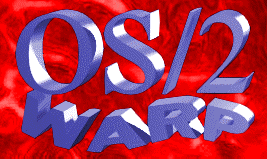

Around this time (circa 1990), Microsoft's other project, Windows, now at version 3.0, was starting to gain popularity with some users. Previously, Windows had been little more than a task-swapping shell for DOS applications, and was intended to compete with QuarterDeck's DesqView. Users found it appealing becaused it contained some of the GUI elements that were being developed for OS/2. A decision was made to drop all support for OS/2, and go strictly with Windows. However, because of the history they had with IBM, and because they still used so much of their technology (Object Linking and Embedding [OLE] aka ActiveX and Component Object Model [COM] are derived from Dynamic Data Exchange [DDE]), Microsoft to this day maintains a broad-ranging cross-licensing agreement with them. Windows NT was partially based on the OS/2 work that they did for IBM, and Windows 95 also borrows heavily from this code.
With Microsoft no longer doing development on the user interface, IBM was faced with creating this themselves. In this timeframe, a deal was made with Commodore. Commodore licensed IBM's REXX scripting language for inclusion in their AmigaOS, and IBM took many GUI design ideas from the AmigaOS for their new GUI. With the release of OS/2 2.0, the WorkPlace Shell (WPS) user interface was born. OS/2 was now a 32-bit operating system, with a fully object-oriented graphical user interface. Based on IBM's System Object Model (SOM), the WorkPlace Shell is still the model for all graphical user interfaces, since nothing else has come even close to providing the same functionality. OS/2 2.1 and 2.11 followed, including a version of 2.11 with full Symmetric Multi-Processing (SMP) support. OS/2 2.x won over many Windows 3.x users because of it's ability to run Windows programs seamlessly, while maintaining a stable system, something that Windows had trouble doing. IBM even went so far as to trademark the term "Crash-Proof."

In November, 1994, OS/2 Warp 3.0 was released. It was the first PC operating system to have built-in Internet support. At the time, OS/2 critics said that Internet support was just "more geek crap," but today every major operating system ships with built-in Internet support. The release of OS/2 Warp Connect followed, and included full network support out of the box for all the major protocols, including IPX, TCP/IP, and NetBIOS. At this point, the focus for OS/2 became the "networked computer." When Windows 95 was released in August, 1995, resellers reported record sales on OS/2, as many people saw how Microsoft's hack didn't quite cut it for real-world, mission-critical usage.
OS/2 Warp 4.0 (codename "Merlin") was released in August, 1996. It's new features included a "beautified" GUI; the new graphical icons and "widgets" were designed by an ex-Apple programmer. The beauty was much more than skin deep, however. Also included were OpenGL support, OpenDoc support, and a full Java Development Kit, which included a Java Virtual Machine, which allows Java applications to be run independent of a browser. For high-end systems, the included VoiceType Dictation system allowed users to navigate their computer and dictate text to their computer without ever touching a keyboard or mouse. Microsoft is just now planning to follow in this path.

OS/2 Warp 4.5 (codename "Aurora") was released in 1999, as a server release. It featured a bootable install CD, a new 32-bit TCP/IP stack, a journaling file system (JFS), and a logical volume manager. A desktop release, deemed "Convenience Pak for Warp 4" was released as version 4.51 in late 2000, along with a corresponding update for the server version. "Convenience Pak 2" was released as version 4.52 in early 2002. These Convenience Paks are primarily for "convenience," as they include new features and fixes as part of the initial installation, rather than needing to apply numerous patches and updates.
Around the same time as the first Convenience Pak, a company called Serenity Systems announced that they were licensing OS/2, and would be reselling it as eComstation. The 1.0 version, released in 2001, was based on Convenience Pak 1, and featured a (buggy) replacement installer, and integration of some useful third party tools and addons. The 1.1 version, released in 2003, was based on Convenience Pak 2, and featured a vastly improved replacement installer, and further integration of useful third party tools and addons.
IBM has been winding down its support for OS/2, with 2006 being listed as the end of service. It is unclear how long Serenity Systems can continue to be proactive with eComstation after that, as they do not have access to the IBM source code.